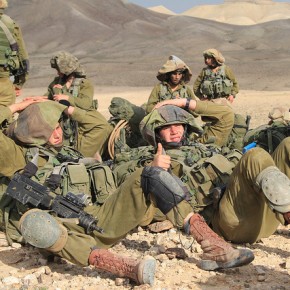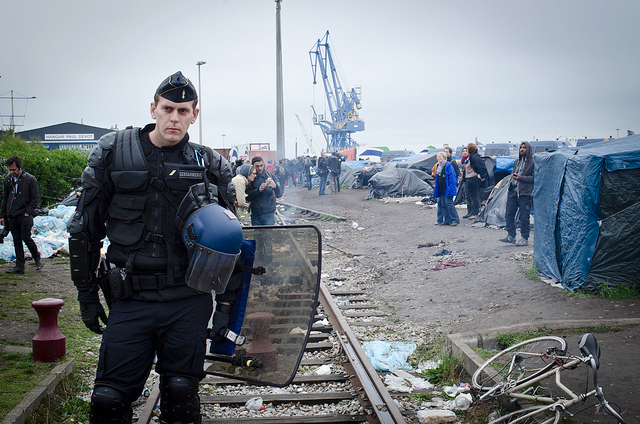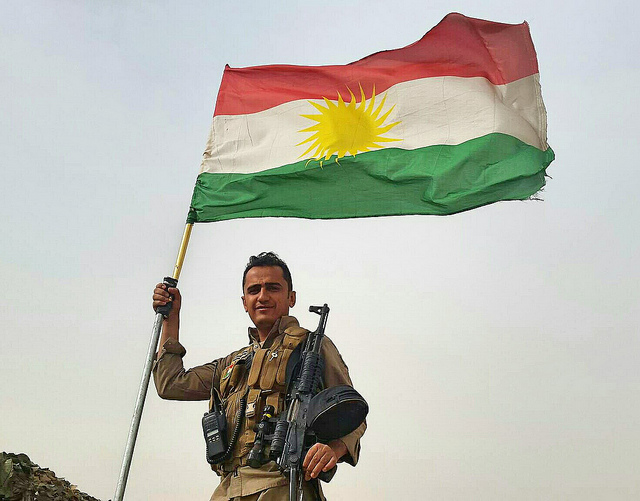Photographer Brandon Stanton’s Humans of New York project, which has spawned “Humans of” pages in many other locales – Dublin, Mumbai, Jerusalem and the Fiji Islands to name a few – began in 2010. Stanton had just left a career in the Chicago financial industry to move to New York, where he began walking around the city, taking street portraits.
At this time, Souciant contributor Shirin Barghi had just begun attending New York University to pursue a journalism career in the US. Shirin, who grew up in Tehran and worked as a journalist there until she came to the US, mulled over the idea of starting a Humans of Tehran in the winter of 2011 while she was back in Tehran to attend her father’s funeral.
“I wanted to do something similar to Humans of New York, and at the time I thought this would be a very good project for me take my mind off things,” Shirin told me in a Skype interview. “The image people have of Iran is so demonized and divorced from the reality of the people there that I thought this sort of project is a really good way of showing normal people in Tehran.”
She decided to formally begin the project, billed as “a pictorial glimpse into the daily lives of Iranians in their beloved dusty rusty Tehran” on Facebook, with just herself and her Canon EOS 450D.
Stanton told reporters that biggest problem he faced at the start was that “when I first started nearly everybody turned me down” because they felt uncomfortable with having a stranger take their pictures. Part of his growing success since then has been the knowledge among people who’ve heard of the project that Humans of New York photos almost always come with a short story about the subject, a conversation between the subject and Stanton, or a snappy caption.
For Shirin, though, her captions are fewer and further between, which goes back to the problems she had at the very start, getting her subjects to stand still so she could photograph them. Memories of the 2009 crackdown on the Green Movement were still strong, and the scenes of riot police and hired irregulars spying on, beating and arresting hundreds of demonstrators (including many journalists covering the protests for independent Iranian news outlets) played over in their heads when Shirin asked to photograph them.
Why was this the case? Shirin explained that, “people are still so skeptical about photographers in Iran, especially after the 2009 election protests, where one of the tactics the government used was to just take pictures of people and [publish] their pictures in newsletters.” “It was similar to what NYPD was doing to Occupy Wall Street,” Shirin continued, “they were sending out vans [to surveil] people and take pictures of demonstrators. People were really skeptical of photographers because they were putting photographs in newspapers they would distribute on the Tehran Metro. They would say, ‘these are the people who are spreading unrest, these are hooligans’; they would basically brand opposition politicians and demonstrators as hooligans and publish their pictures in free newspapers handouts… and it was scaring people off.”
As a result, few people trusted her at the start: “when I went up to people and said ‘You look really interesting, can I take a picture of you?’, people would ask ‘Why?’ And I would tell them, this is a project that I’ve started on Facebook. And then they’d ask ‘But why would you want to do that?’ They’d ask me so many questions, and when I went to ask their names, either they wouldn’t say their names or they would give their first names and not their last names.”
Despite this, Shirin was still able to amass dozens of photographs and travel throughout the country to shoot scenes of daily life in Iran (though focusing on Tehran.) After deciding to come back to the US to complete her MA degree in journalism, Shirin had to discontinue her project for the time being. It turns out, though, that her initial forays had proven more popular than she thought.
![Iranian hipsters, Friday Bazaar. [Omid Iranmehr]](http://souciant.com/wp-content/uploads/2013/03/Iranian-hipsters-Friday-Bazaar.-Omid-Iranmehr.jpg)
“I talked with him, and I told him this is the deal: I want you to go around Tehran and take street portraits of ordinary Tehranis, similar to Humans of New York. And he said, ‘Sure, I could do that,’ and he was fine with it. He would take the pictures, send the story to me in Persian and I would translate and write the captions.” Another contributor, Nooshafarin, was brought on board the project as well, and Omid and Nooshafarin now account for the lion’s share of Shirin’s photographs, though anyone is welcome to submit pictures for consideration. Shirin would soon like to move it into a separate site so it could incorporate a video section as well, and to seek out exhibition partners for her contributors’ work. “We don’t want it to be only Facebook-based anymore.”
As the Facebook page began hosting new content, with Omid and Nooshafarin’s contributions, Shirin says she got emails praising the work, but also “all sorts of criticism.” “You’re only showing smiling people,” she said people emailed her. “You’re avoiding the gritty areas.” Correspondents complained the photos were too saccharine.
![kater girls, Vanak Square. [Nooshafarin]](http://souciant.com/wp-content/uploads/2013/03/Skater-girls-Vanak-Square.-Nooshafarin.jpg)
But while “we got all this new love from Iranians,” Shirin says, “we still get two main kinds of criticism: one, that we’re only showing smiling pictures, and two, our captions aren’t as ‘cool’ as Humans of New York’s are.”
“But that’s the thing, in Tehran, people are too scared to share their stories, and many times I asked Omid to talk to the people and he said he did, but 99.9% of the time they’re so apprehensive they won’t tell us anything about themselves.”
“But some photos speak louder than words. I love the captions that Humans of New York provides for its photos, but it’s not the same in Tehran, people don’t want to tell their stories. People are very, very private, as soon as people go outside, they become private people and they set up these barriers.”
So despite these initial problems in securing her subjects’ permission to take photos, Shirin’s work – and those of the photographers who she now publishes – have become increasingly popular in the country and among the Iranian Diaspora, who now comment on her photos in both Farsi and English, and sometimes argue with one another over them – especially when the subjects in question are clerics, who theoretically form one camp in the Iranian political establishment but are in fact not so monolithic as that: several “pro-Green” clerics remain under house arrest due to their past support for reformers at odds with the Supreme Leader, Ayatollah Khamenei, or the political machines associated with both Iran’s president and the mayor of Tehran.
![Muslim clerics, Jooybār St. [Omid Iranmehr]](http://souciant.com/wp-content/uploads/2013/03/Muslim-clerics-Jooybār-St.-Omid-Iranmehr.jpg)
Another favorite is the group of young men practicing Parkour in Tehran. “Never in my wildest dreams did I think that I’d find parkour traceurs in Tehran,” she wrote as the caption for Omid’s shot of one of the young men flipped over in midair.
“Haven’t heard of Parkour?” she wrote to her readers (I had not, so she directed me to read the entire post before continuing our exchange.) “It’s a popular sport, also called ‘freerunning’ in which participants have to overcome obstacles within their path by adapting their movement to the environment. (You can find plenty of examples on YouTube.) Not surprised it’s becoming popular in Iran. After all, we Iranians have become experts in overcoming obstacles and would probably make the best parkour traceurs in the world.”
![Practicing Parkour, Laleh Park. [Omid Iranmehr]](http://souciant.com/wp-content/uploads/2013/03/Practicing-Parkour-Laleh-Park.-Omid-Iranmehr.jpg)
Despite official propaganda and sanctions, Coca-Cola’s signature syrup could still be sold legally to Iran in 2012. Two photos taken at Café Naderi, one of aging waiters and another of a class reunion, are meant to evoke associations with famous interwar Left forums in Vienna, New York and Paris. Unlike the now-shuttered Café Prague, a popular student hangout that closed in January 2013, rather than comply with an ordinance to install CCTV cameras on the premises, Café Naderi has managed to stay open despite several temporary closures. “They just cannot close it,” Shirin says, “it is just too sacred.”
Shirin has also been sure to include photos of Afghans living in Iran, whose numbers have swelled from periods of fighting in the country since the 1970s, and are viewed much like other migrant populations in Europe and Asia driven away by war: inassimilable, criminal and only good for jobs no native sons or daughters want. Another shared feature of globalization, alongside with the scenes of parkour, glass Coke bottles and Tommy Hilfiger Christmas tree displays – which, like the bottles, are often associated with (Christian) Armenians.
Her favorite picture, though, is of a woman standing on a bridge in the rain, drops running off her umbrella, as a younger girl walks behind her. “I really like this picture aesthetically,” Shirin says, her choice of caption decidedly political as well: “In what language does rain fall over tormented cities?” It’s a line from a poem by the Chilean Noble Laureate Pablo Neruda.
Notes
Photo #1: Shirin Barghi
Milad and Faramarz, Afghan shopboys (and aspiring businessmen) at the Tehran grand bazaar. More than two million Afghan refugees live in Iran, according to statistics provided by the Afghan Ministry of Refugee Affairs. Only 900,000 of them have legal residency papers.The Afghan community in Iran is often subject to ethnic discrimination and racism. In May, a senior Iranian official threatened to expel all Afghans residing in the northern Iranian province of Mazandaran. The move sparked an outcry among many Iranians and Afghans, culminating in the “We are all Afghans” social media campaign in support of Afghan rights.
Photo #3: Omid Iranmehr
Contrary to what many would think, not all clerics are into politics and power. There are some who steer clear of state affairs and are rather openminded on religious and theological questions. Met these two while they were coming back from a seminar. They welcomed my request for a photo with open arms.
Photo #7: Omid Iranmehr
Never in my wildest dreams did I think that I’d find parkour traceurs in Tehran. Haven’t heard of Parkour? It’s a popular sport, also called ‘freerunning’ in which participants have to overcome obstacles within their path by adapting their movement to the environment. (You can find plenty of examples on Youtube) Not surprised it’s becoming popular in Iran. After all, we Iranians have become experts in overcoming obstacles and would probably make the best parkour traceurs in the world. These parkour aficionadas were practicing in Laleh Park. I was thoroughly impressed to see that they had a girl training with them. Neat, huh?
All photographs courtesy of Shirin Barghi/Humans of Tehran






Life goes on no matter how hard the times are.